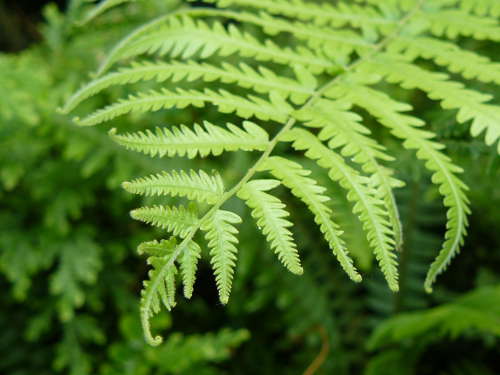 Location Taken: Garfield Park Conservatory, Chicago, Illinois
Location Taken: Garfield Park Conservatory, Chicago, Illinois
Time Taken: April 2008
Every summer, hordes of ferns unfurl around the woods by my Grandparent’s place. Their delicate leaves curl out gradually from the tight spiral of the young fern, creating an ever-changing landscape of low-laying leaves.
I, of course, was directed to step on them.
Well, only the ones in the path through the woods. They grow fast, so mowing them down to keep the paths open gets very time-consuming. But they’re delicate, and their stems snap easily, so every night, as the horde of grandkids went through the woods playing Frisbee golf with my Grandma, we’d merrily trample every fern frond we saw.
How often do you get adults encouraging you to destroy something, after all?!
Despite all the death and destruction I bequeathed the fern population over the years, I really do like these plants. They’re rather different from most of the trees and grasses and flowers you find. They have a very different texture and rigidity to them, they form a marvelous canopy all the way down at knee-level, and of course, there’s the spiral of the young ferns.
This, of course, is because ferns are a very old plant.
They show up in the fossil record around 360 million years ago, about 235 million years before the first flower spread its petals to the sky. And they ruled the planet way back then, covering the vast swamps of the Carboniferous era. They have held strong, changing slower than most other species, watching the years go by. Ferns were around at the rise of the dinosaurs, and they survived their fall. These days, they hold onto their niches in the world, crowded out by the more sturdy modern bushes and flowers and grasses, but they still hold on.
Well, until a horde of grandchildren come rampaging over them, anyway.
